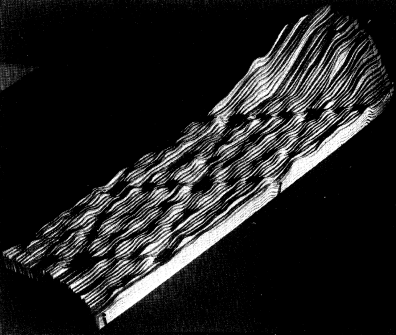
Heinrich (“Heini”) Rohrer, a nanotechnology pioneer, Nobel Prize winner, and personal mentor to me and many other scientists, has died.
The field of nanotechnology was largely enabled by Heini’s co-invention of the scanning tunneling microscope along with his collaborator, Gerd Binnig, in the early-1980s. This microscope scans an atomically sharp tip across a surface to image the surface structure on an atom-by-atom basis. It was soon realized that scanning tunneling microscopes could also be used to manipulate material on the atomic level and to image not only atoms but also individual chemical bonds, revolutionizing our ability understand and control matter on atomic length scales. So revolutionary was this type of microscope, that Rohrer and Binnig shared the Nobel Prize in Physics for its invention in 1986 (for more detail, you can read their Nobel Prize lecture here).

I got to know Heini in early 1985 when I started work at IBM’s main research center at Yorktown Heights, NY. Heini was on another continent, at IBM-Ruschlikon (Switzerland) but visited my IBM-Yorktown location often. The scanning tunneling microscope community was very small back then so everyone in the field knew each other.
In 1983 Binnig and Rohrer published a seminal paper on the atomic-level structure of silicon surfaces that ultimately set the stage for them to win the Nobel Prize in physics. The data in this paper were taken using a pen-on-paper type device known as a chart recorder. They then cut out the individual lines of data, stacked those pieces of paper together, and used them to create a physical model that they then photographed.

Reprinted figure with permission from G. Binnig, H. Rohrer, Ch. Gerber, E. Weibel, Physical Review Letters, 5, 120, 1983. Copyright 1983 by the American Physical Society. Readers may view, browse, and/or download material for temporary copying purposes only, provided these uses are for noncommercial personal purposes. Except as provided by law, this material may not be further reproduced, distributed, transmitted, modified, adapted, performed, displayed, published, or sold in whole or part, without prior written permission from the American Physical Society.
In 1985 when I was building my first microscope of this kind, I was using an IBM-PC (new!) to computerize the data acquisition. I remember Heini and his booming, Swiss-lilting voice coming into my labs and good-naturedly telling me to “throw away that computer and get a chart recorder!” I promptly ignored his advice but appreciated his humor!

After winning the Nobel Prize in Physics in 1986 Heini remained a giant but humble man who helped me and many other young people advance their careers. While I’ve never seen it, I was told he wrote a letter supporting my advancement to a tenured professor back in 1990. A number of years later I was with him at a conference in Italy and he invited about 8 of us to drive into Switzerland to visit his villa near the Italian border. Heini was the consummate host as well as an admirable gardener. Most of all, he again demonstrated himself to be a person of the utmost caliber.
Heini — You are a giant in my eyes and in the eyes of many others.
You are already sorely missed. Rest in Peace.
